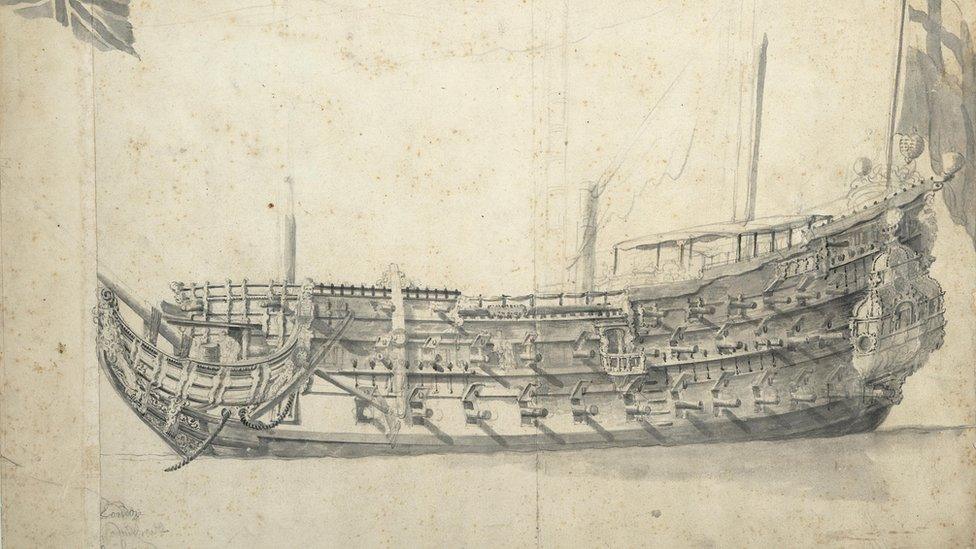The Gloucester shipwreck: Hopes Great Yarmouth museum would boost tourism
- Published
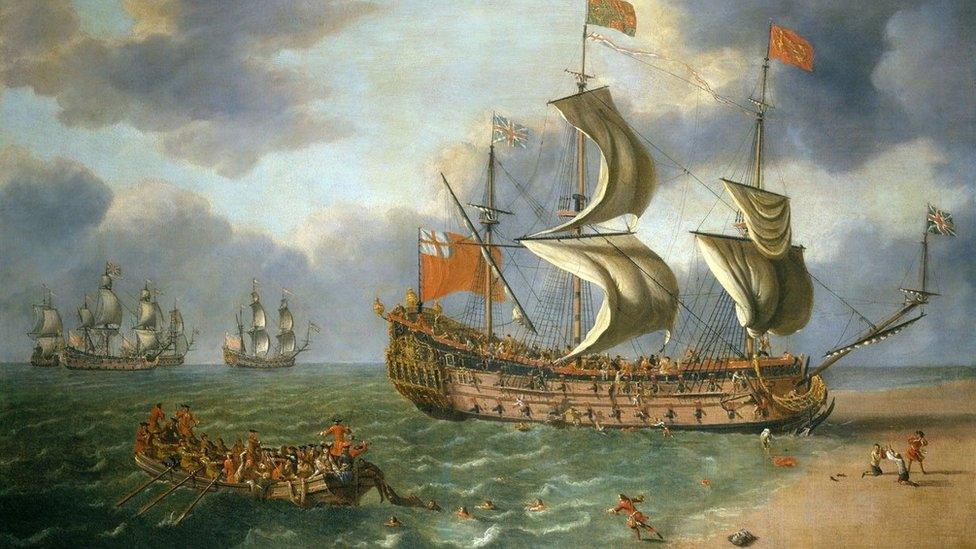
Diarist and naval administrator Samuel Pepys witnessed The Gloucester's sinking
Great Yarmouth housing a permanent museum to items from a royal shipwreck would provide a "marvellous tourist attraction", a council leader has said.
The discovery of The Gloucester, which sank off the coast of the Norfolk town in 1682, almost killing a future king, was made public last week.
Carl Smith, leader of Great Yarmouth Borough Council, said he would like the town to house a permanent museum.
"If they can recover the wreck it would be absolutely fantastic," he said.
"But even just having the artefacts on display, the history that brings to Great Yarmouth, housing the museum here would be a marvellous tourist attraction."
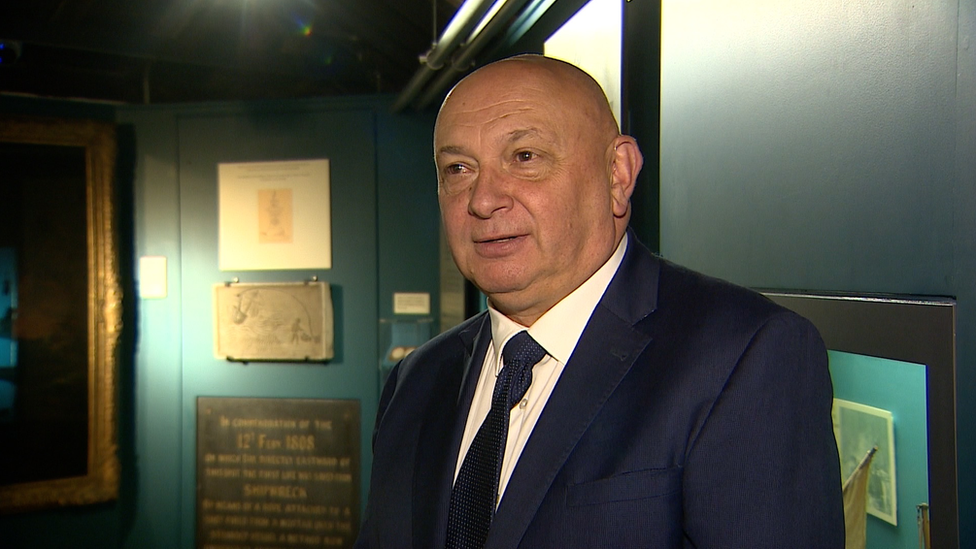
Carl Smith, of Great Yarmouth Borough Council, hopes the town will house a permanent museum for artefacts from The Gloucester
Norfolk-based printer brothers Julian and Lincoln Barnwell, together with their late father, friend James Little and another unnamed friend, spent four years on diving expeditions to find the Gloucester's watery grave.
It ran aground on some sandbanks, nearly killing the Duke of York, who went on to become King James II of England.
The divers first discovered its whereabouts in 2007, but it was kept a secret for 15 years until precious artefacts were salvaged from the seabed.
The Gloucester was described by maritime expert Prof Claire Jowitt, from the University of East Anglia, as being of significant "international importance".
Two divers said it was an "absolute privilege" to discover the warship
Mr Smith, Conservative, said the revenue potential from tourists would be enormous.
He said the Mary Rose Museum in Portsmouth cost £40m to build and had since attracted some 100m visitors.
The Mary Rose, the flagship of Henry VIII, was raised to the surface, external after 437 years at the bottom of the Solent.
Lord Dannatt, the deputy lieutenant of Norfolk, is due to chair a charity caring for items from The Gloucester.
Mr Smith said he would be doing all he could to work with the trust.
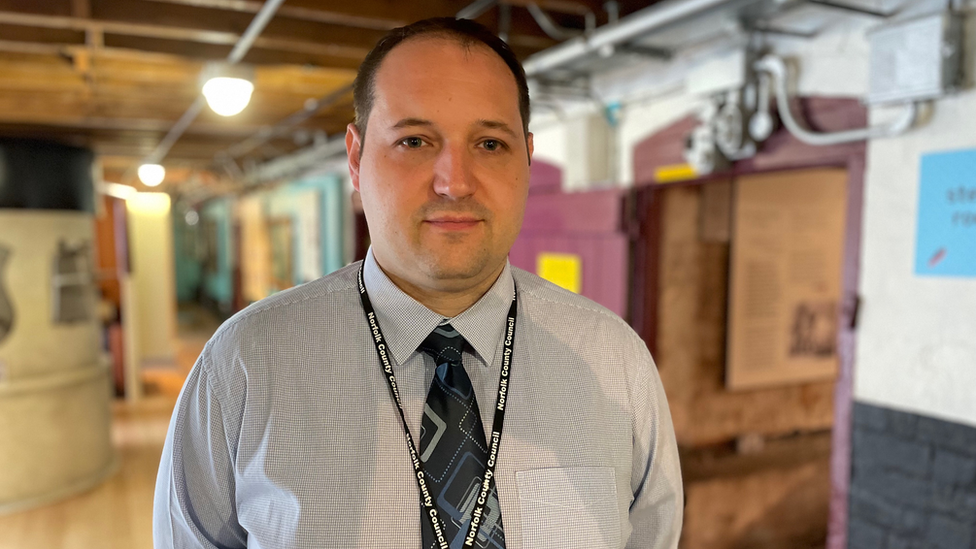
Philip Miles, from the Time and Tide museum, said a permanent museum could be a way off
But Philip Miles, exhibitions officer of the Time and Tide museum in Great Yarmouth, said "we're probably a little way off in finding a permanent home for these items".
"Every time something is recovered from the seabed there is a long legal process, it involves the receiver of wrecks," he said.
"Because it was a naval vessel, the armed services are still involved, the Navy are still involved, obviously the [Barnwell] brothers are still involved, there's lots of paperwork too.
"This has been going on since 2007, we're now in 2022 and there are still more things on the seabed that are being recovered all the time."
The ship is in international waters but the vessel and its contents are owned by the Crown.
Norwich Castle Museum is set to host a major exhibition showing some of The Gloucester's items brought to the surface from February.
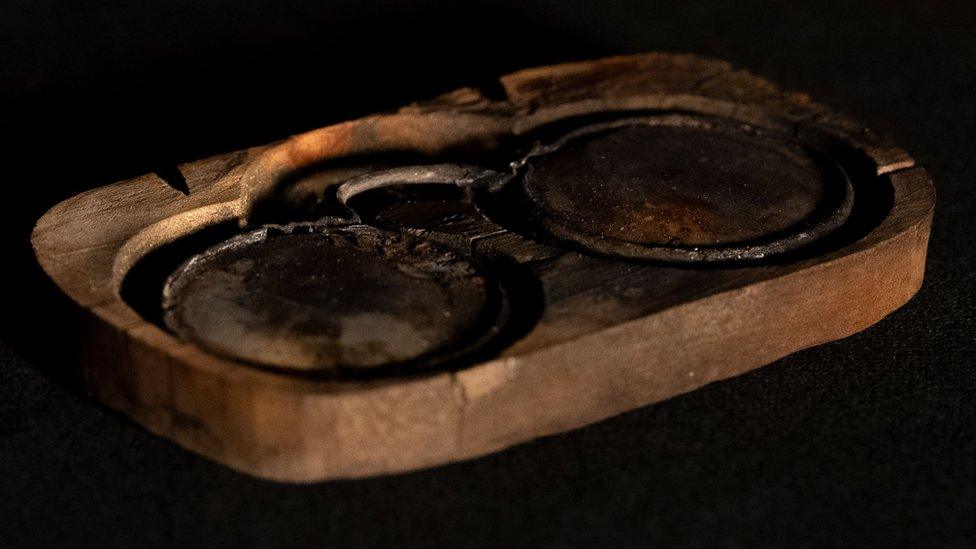
Glasses found in the original case and dating back at least 340 years were among the finds at the underwater site

Find BBC News: East of England on Facebook, external, Instagram, external and Twitter, external. If you have a story suggestion email eastofenglandnews@bbc.co.uk
Related topics
- Published12 June 2022
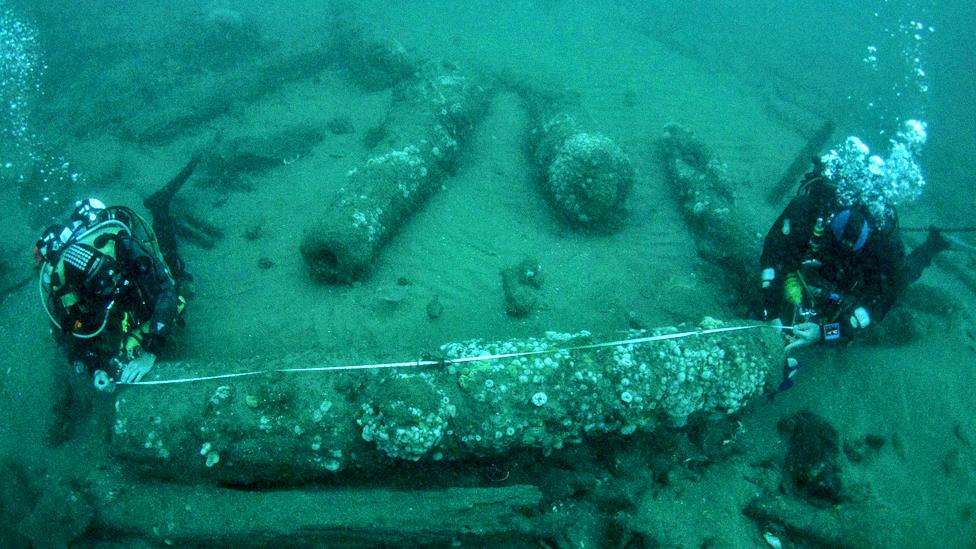
- Published10 June 2022
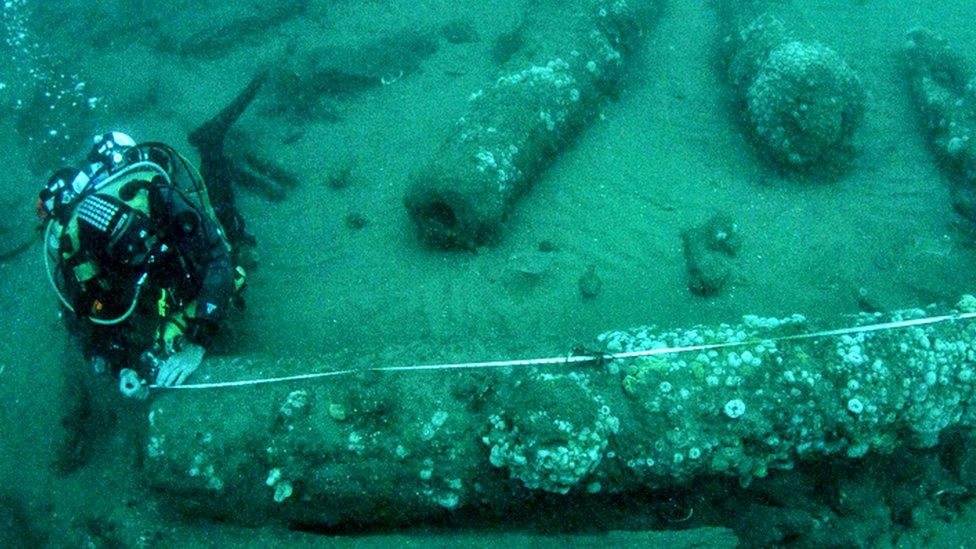
- Published23 September 2021
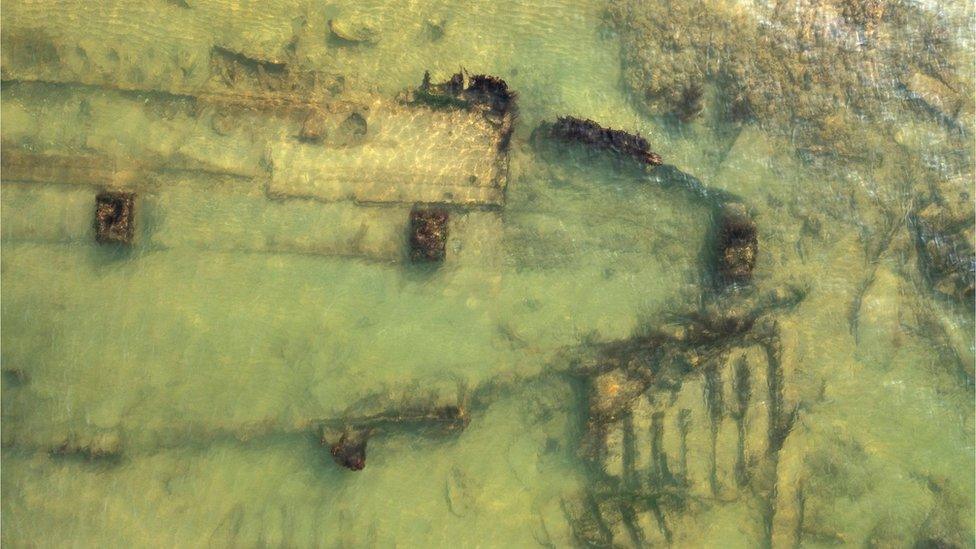
- Published6 July 2020
